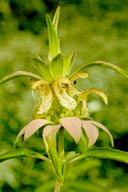 Loading... Please wait...
Loading... Please wait...- Home
- SEEDS
- SEED MIXES
- BUY PLANTS
- Info Request
-
Educational Videos
- Greenhouse Transplanting Demonstration
- Native Seed Cleaning demonstration at Ion Exchange Native Seed and Plant Nursery
- Attracting Butterflies
- Bidens - Bidens cernua Harvest Video
- Big Blue Stem Harvest
- Butterfly Milkweed Video
- Button Blazingstar - Liatris aspera Video
- Buttonbush - Cephalanthus occidentalis Video
- Canada Anemone - Anemone canadensis Harvest Video
- Cardinal Flower - Lobelia cardinalis Video
- Control Burn - Wildflower Field
- Cream Gentian - Gentiana flavida
- Culver's Root - Veronicastrum virginicum Video
- Cup Plant - Silphium perfoliatum Video
- Dormant Seeding | Planting
- Earthyman's Favorite Wildflowers Video
- Eco-Friendly Golf Course Seed Mix
- Floating Islands
- Fringed Loosestrife - Lysimachia ciliata Video
- Giant Yellow Hyssop - Agastache nepetoides Video
- Indiangrass - Sorghastrum nutans Video
- Iowa Prairie Partner Program
- Leadplant - Amorpha canescens (Potted) Video
- Meadow Blazingstar - Liatris ligulistylis
- Midland Shooting Stars - Dodecatheon meadii Video
- Native Plant Nursery Field Irrigation Experiment
- Nodding Onion - Allium cernuum Video
- Ohio spiderwort - Tradescantia ohiensis Video
- Old Man's Beard - Clematis virginiana blooms Video
- Oxeye Sunflower - Heliopsis helianthoides Video
- Prairie Spiderwort - Tradescantia bracteata
- Purple Coneflower - Echinacea purpurea Video
- Rain Garden or Water Garden Video
- Rattlesnake Master - Eryngium yuccifolium Video
- Riverbank Stabilization - Wetland Plants
- Rose Mallow - Hibiscus militaris Video
- Rosinweed - Silphium integrifolium Video
- Royal Catchfly - Silene regia
- Showy Tick Trefoil - Desmodium canadense Video
- Sneezeweed - Helenium autumnale Video
- Swamp Betony - Pedicularis lanceolata Video
- Swamp Milkweed - Asclepias incarnata Video
- Sweet Blackeyed Susan - Rudbeckia subtomentosa Video
- Tall Coreopsis - Coreopsis tripteris Video
- Urban Butterfly Garden
- Wild Bergamot - Monarda fistulosa Video
- Wild Geranium - Geranium maculatum Harvest
- Wild Goldenglow - Rudbeckia lanciniata Video
- Wild Petunia - Ruellia humilis Harvest Video
- Woodland Knotweed - Polygonum virginianum Video
- Yellow Coneflower - Ratibida pinnata Video
- Blog
- Resources
- Policies
Contact Us
Phone:
563-419-0837
or 563-535-7231
Email:
hbright@ionXchange.com
Browse Products
Add to Wish List
You Recently Viewed...
Our Newsletter
Product Description
Monarda named in honor of Spanish botanist, Nicolas Monardes, who wrote extensively in the 16th century about medicinal and useful plants. Punctatus from the Latin word for "pricked" or "dotted".
| Sun Exposure | Prairie, Savanna |
| Soil Moisture | Wet Mesic, Mesic, Dry Mesic |
| Bloom Time |
Summer, Fall August, September, October |
| Bloom Color | White |
| Max Height | 4 feet |
| Wetland Code | FACU |
| Germ Code | C(60) |
| Seeds Per Packet | 300 |
| Seeds Per Ounce | 50,000 |
Grows from 1 to 3 feet; prefers sandy soils; very wide-jawed yellowish flowers with purple spots bloom from July to October.
Edible Uses: Leaves - raw or cooked. A strong aromatic taste, they are used as a flavouring in salads and cooked foods, and also as an aromatic tea.
Medicinal Uses: Horse mint was traditionally taken by several native North American Indian tribes to treat nausea and vomiting, and to encourage perspiration during colds. It was also applied externally as a poultice to treat swellings and rheumatic pains. Nowadays it is used primarily to treat digestive and upper respiratory tract problems. The leaves are carminative, diaphoretic, diuretic, emmenagogue, rubefacient, stimulant, stomachic and vesicant. An infusion of the leaves is used in the treatment of flatulence, nausea, indigestion, catarrh in the upper respiratory tract, and to induce sweating and promote urination. The herb is principally used externally as a rubefacient, applied as a poultice it helps to lessen the pain of arthritic joints by increasing the flow of blood in the area and thereby hastening the flushing out of toxins. The leaves can be harvested before the plant flowers, or they can be harvested with the flowering stems. They can be used fresh or dried. The plant is a rich source of the medicinal essential oil 'thymol', which is antiseptic. The plant has been commercially cultivated for its essential oil, though this is now produced synthetically. Thymol is also an effective hookworm remedy, but must be ingested in such large quantities that it can prove fatal to the patient.
Otherf Uses: The plant has a pleasing aroma and has been hung in the house as an incense.
Herbal Uses: Unknown












